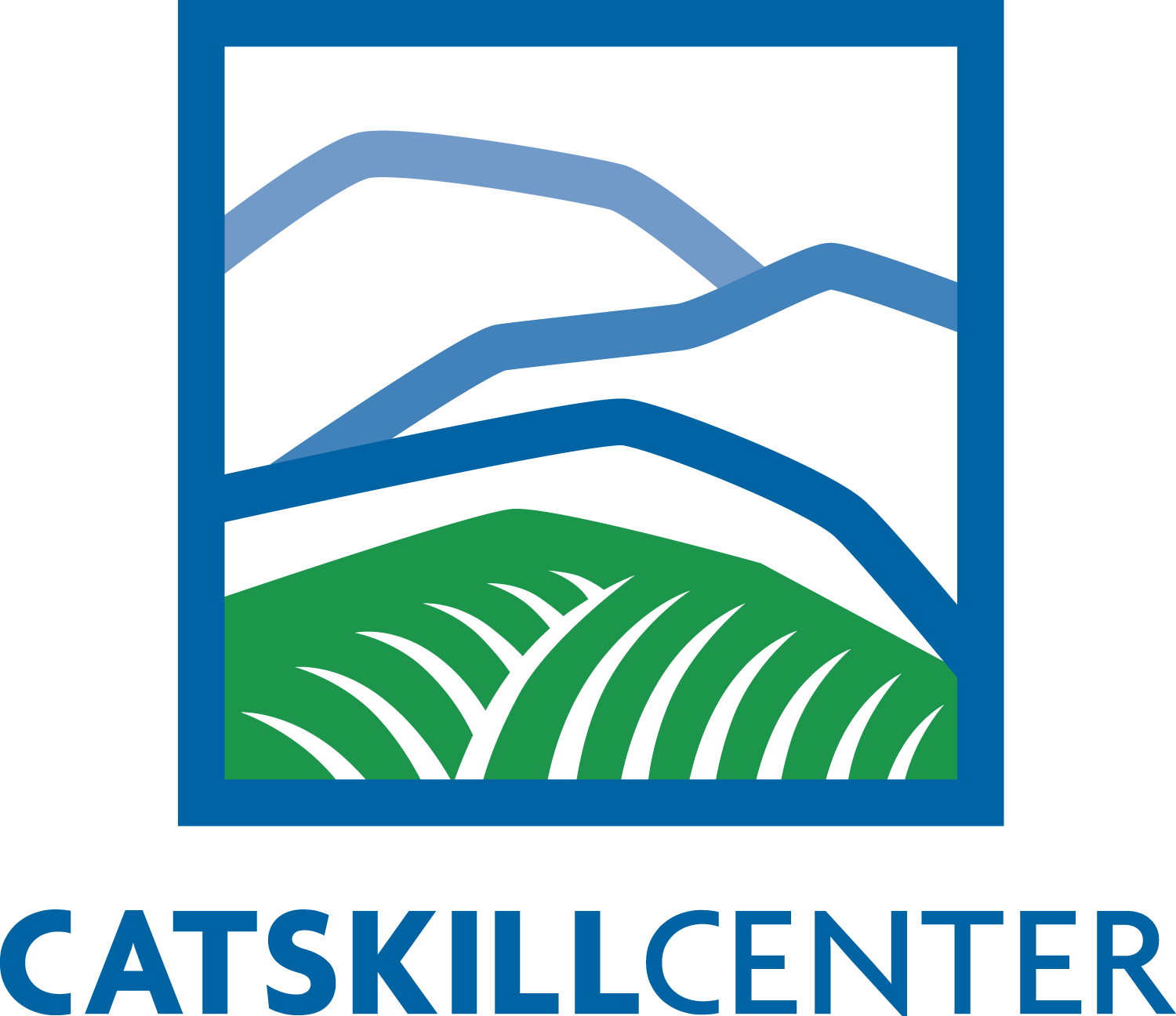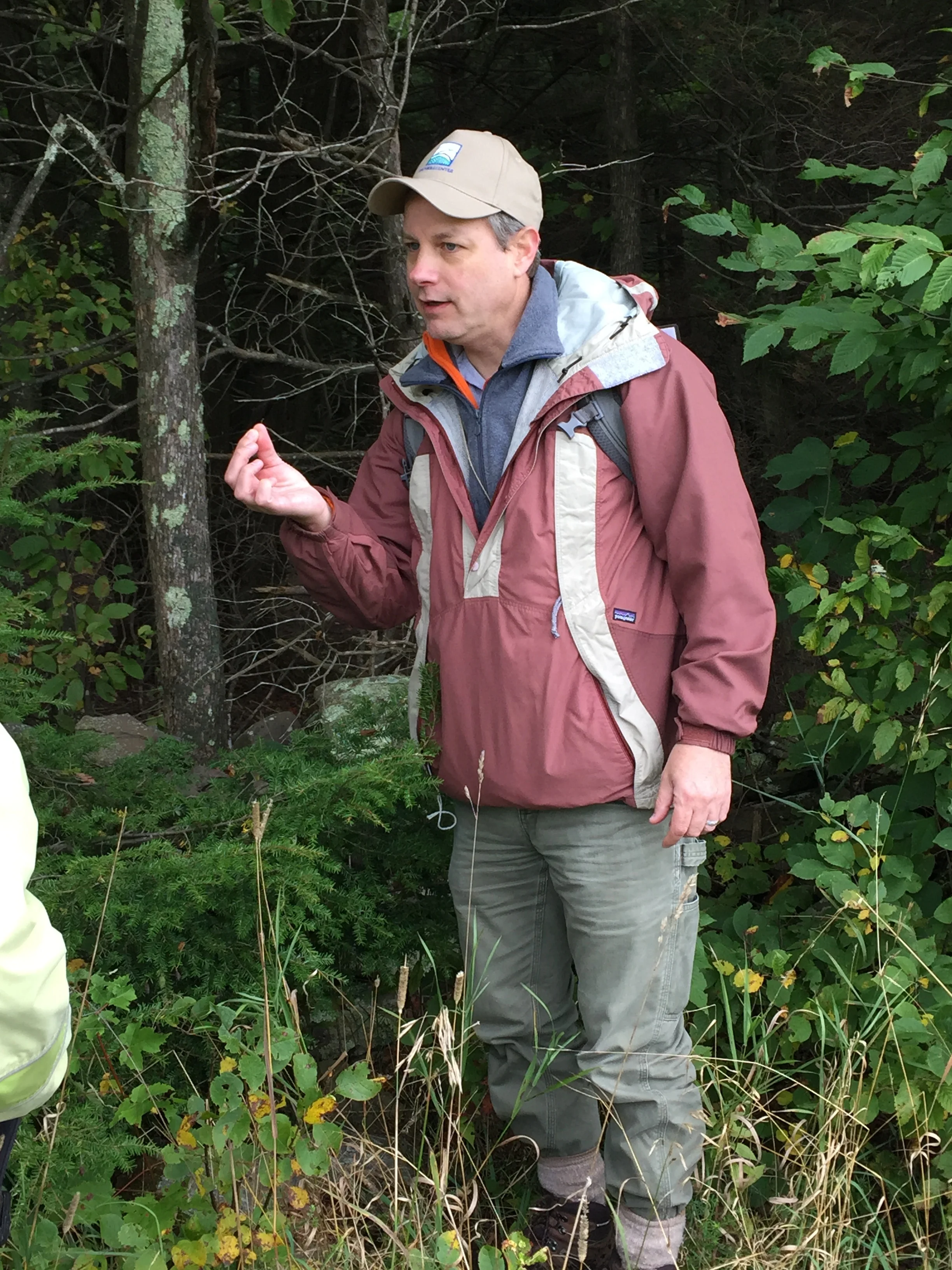A Windham Path Streamwalk (with scientists)
On a recent Saturday morning that was balmy and bright down in the valley and downright chilly up in the mountaintop clouds, John Thompson of the Catskill Regional Invasive Species Partnership (CRISP) and Julia Solomon of the Streamside Acquisition Program (SAP) geeked out about all things streamside on a guided walk with intrepid participants who, fortunately, brought plenty of both warm layers and burning questions.
The walk, held at the Windham Path on the Batavia Kill stream, was the first public collaboration between CRISP and SAP, both programs of the Catskill Center.
Catskill Regional Invasive Species Partnership Coordinator, John Thompson examines a Hemlock
CRISP is a cooperative partnership of diverse stakeholders throughout the Catskill region whose mission is to promote education, prevention, early detection, and control of invasive species to limit their impact on the ecosystems and economies of the Catskills. In addition to conducting public outreach and management activities, CRISP supports research on ecological impact and effective controls of invasive species.
SAP is a partnership project between the Catskill Center and New York City to reach a shared goal: protect the streamside, forested lands and floodplains that are essential for maintaining Catskill streams’ excellent water quality. Through this program, the Catskill Center works with interested landowners in the Schoharie Basin to acquire vacant streamside property at market value for ownership by New York City. The acquired land is then set aside for preservation as natural, forested ‘buffers’ and floodplains, which can help mitigate flood risk, provide wildlife habitat, and offer recreational opportunities, in addition to protecting water quality.
To understand the potential synergy between these two programs, look no further than to the hemlock woolly adelgid, a nasty insect pest that is threatening hemlock forests throughout the Catskills.
Hemlock forests help protect water quality and provide shade for streamside land year-round, which helps keep our trout waters cool. If Julia sends a letter to the owner of a property with streamside hemlock woods who decides not to sell their land, but wants to know how to care for their streamside property, she can refer them to John, who can train the landowner to help in monitoring for hemlock woolly adelgids and other invasive pests. Conversely, if John has been working with a streamside landowner on invasive projects, and that owner is considering selling their land, John can refer them to Julia to discuss permanent protection options.
Ultimately, both programs work to build awareness of the fact that Catskill streams - and the lands that surround them - are important, vulnerable, and pretty darn amazing. The folks who spent two hours getting muddy while learning about everything from knotweed to milkweed and erosion to easements definitely went home with a deeper appreciation of all those things.
— Julia Solomon

